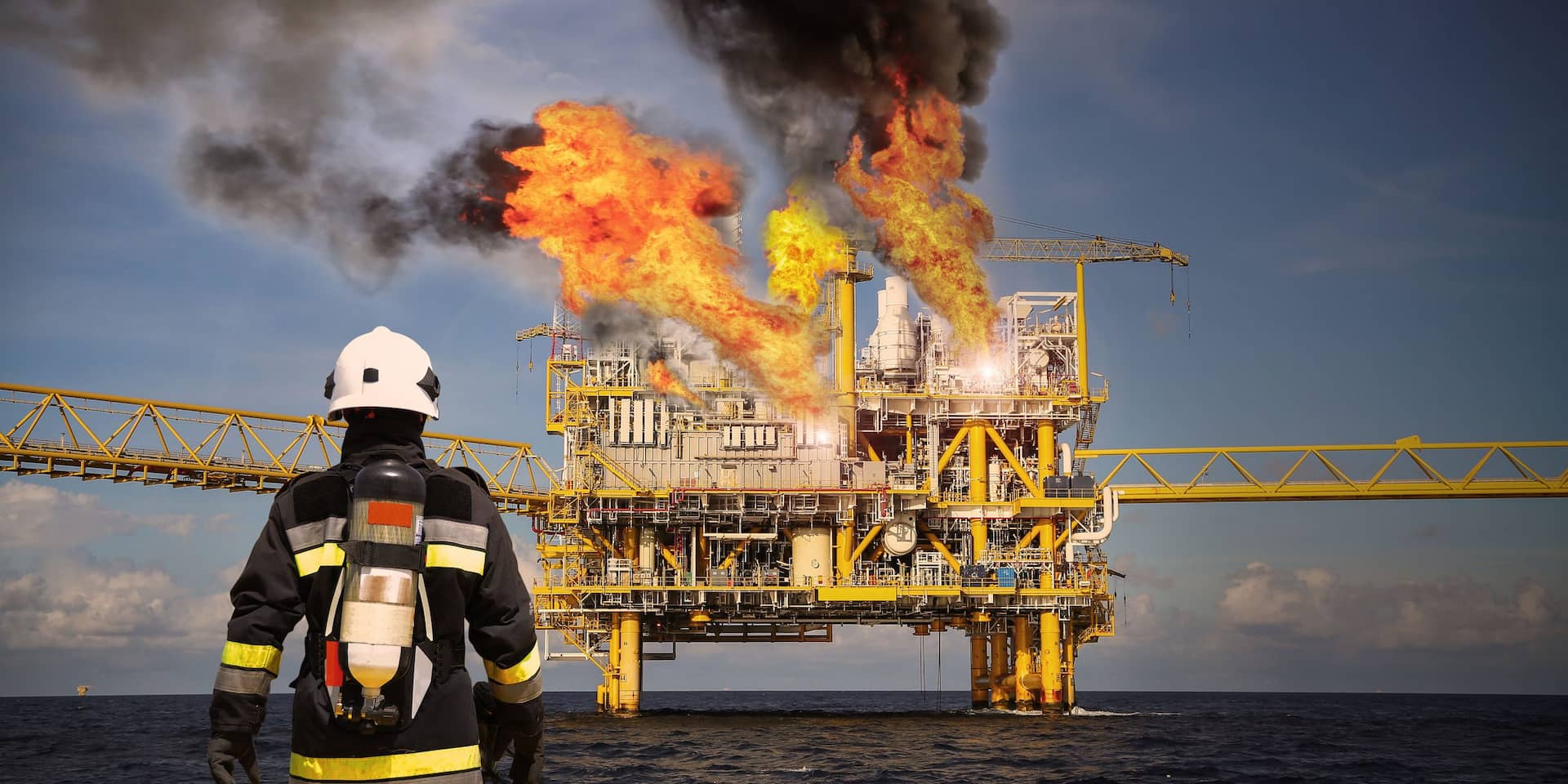By Brian Lantz,
“Out of gas? My ass!” That slogan captured the popular imagination at the time of the 1970’s oil hoaxes and their consequent long, long gas lines. The villain then was purported to be “Arab oil sheikhs”—whose monies had a funny way of “recycling” back into London and New York banks. Jimmy Carter proclaimed, “the moral equivalent of war,” and sank his own presidency.
Today, another presidency has announced yet another energy crisis and is also sinking & stinking. This time the blame is put on “Putin,” and that isn’t floating either. Russia is the largest global exporter of oil, and yet the Biden collective banned (sanctioned) Russian oil, gas, and coal imports and froze the Russian Central Bank’s assets. That set off the global chain reaction we have seen, as oil and gas traders, shipping insurance companies, international banks, and shipping companies refused to even touch Russian gas and oil. Prices of fuel, fertilizer and metals exploded. What the hell did they expect?
Now, a few weeks later, the Biden collective has announced a desperate measure: they will pump one million barrels of oil per day—taken from US strategic oil reserves—and do so for six months. That happens to be the six months between now and the November midterm elections. On April 1, the avatar, “Biden,” ranted, “This is a moment of consequence and peril for the world, and pain at the pump for American families.”
It is a drop in the ocean. It may move gas prices down 10-20 cents. The US utilizes about 20 million barrels of oil a day. Worldwide, mankind’s current, sputtering economy is utilizing 100 million barrels of oil a day—if nations can still even obtain it.
Earlier on March 1, in his State of the Union, the avatar, “Biden” announced, “Tonight, I can announce the United States has worked with 30 other countries to release 60 million barrels of oil from reserves around the world. . . . “America will lead that effort, releasing 30 million barrels of our own Strategic Petroleum Reserve. And we stand ready to do more if necessary, united with our Allies.”
But then on April 1, a more unhinged and desperate “Joe Biden” ordered the release of 1 million barrels a day from our nation’s Strategic Petroleum Reserve. The same “Joe Biden” also demanded that Congress impose financial penalties on oil and gas companies which lease public lands but are not producing. He also said he would invoke the Defense Production Act to encourage the mining of critical minerals for batteries in electric vehicles—part of his continuing loony push to shift to entropic, negative growth, “clean” energy sources, that burn more energy than they produce.
So what is really going on?
U.S. Oil Production—Crude Oil vs. Petroleum
It may come as a bit of a shock, but US domestic crude oil production is only somewhat more than half of U.S. usage. The US has been importing more crude than it has been exporting since 2011.
In the first half of 2020, in the midst of Covid, the U.S. did become a net exporter—that is of crude oil and petroleum products combined. (In 2020 during Covid, both imports and exports of select petroleum products mainly consumed as transportation fuels—distillate fuel oil, motor gasoline, and jet fuel—altogether decreased. Also in 2020, the difference between US crude oil imports and exports fell to its lowest point since at least 1985.) In 2021 we see-sawed, month-to-month. However, the U.S. has returned—at least temporarily under the Biden collective—to being a net importer of particularly petroleum and petroleum products. It is not now a net exporter of energy. The U.S. still is a net exporter of coal and natural gas.
Most important to understand, our nation has been put at the mercy of not so much the OPEC+ cartel, but it’s deliberate by-product: the globalized predatory spot and futures markets of the modern day British Empire. This began with the post-1971 “floating exchange rate” insanity—as currency, and therefore commodity prices, wildly fluctuated worldwide. Then came the 1975 oil embargo that ended the standard long-term contracts in oil negotiated between our U.S. government and Middle East oil producers. With long-term, nation-to-nation contracts shut down, oil pricing was driven by speculation.
Manufacturing vs. “markets”
Natural gas and oil prices—with prices now set in the insane, globalized, and predatory spot markets located in London, New York, and Dubai, and outside the control of any sovereign national government—became volatile and predictably skyrocketed. In this globalized “spot market,” a stock of crude oil may pass through several different owners—especially during its transport by ship. Traders also buy and sell oil on the futures market, in addition to the spot market itself. In the futures market, speculators sign contracts to exchange a given quantity of oil at a future date at a price that is defined in advance—shaping the spot market. And “front-running”—trading based on insider knowledge of future potential market-making sales or purchases—is a norm in both markets. International banks, backstopped by the central banks such as the Fed, finance the lucrative trade.
Regardless, from 2010 through 2022, the United States has exported more refined petroleum products than mere crude—and that has included distillate fuel oil, hydrocarbon gas liquids, and motor gasoline. We should recognize this as a proud and important part of the manufacturing sector of the U.S. economy—which it is! We take crude oil and refine it into more energy-dense, targeted products. As a consequence, we have been a net exporter of petroleum, as well as the products which we think of as plastics—all manufactured, or “cracked” from crude oil.
Crude Oil
The U.S. is still producing less than 12 million barrels of oil daily, below the 13 million high in early 2020, when the Covid lockdown began. Recall that it was in late-April of 2020 that the price of US crude oil crashed through the floor, from $18 a barrel to -$38 (yes, negative $38) in a matter of hours, as rising stockpiles of crude threatened to overwhelm storage.
Production then dropped below 10 million barrels. Since then, high prices have not yet led the large oil companies to return to their pre-pandemic levels of output. One could wonder why, but in 2020, forty-six exploration and production companies and 61 oil-field service companies filed for Chapter 11 bankruptcy.
Instead, with the beginnings of the “post-Covid economic recovery,” net U.S. crude oil imports rose by 19% in 2021 to an average of 3.2 million barrels per day (b/d) as crude oil consumption increased. The U.S. Energy Information Agency (EIA) now forecasts that the United States will continue to import more crude oil than it exports in 2022—before domestic crude oil production is projected to increase to an all-time high of 12.6 million b/d in 2023. Or, that is what the Biden collective, including their EIA, hope will happen.
Who Is Now Producing U.S. Crude Oil, Gas and Petroleum?
On Day One, the incoming Biden collective signed an executive order to impose a temporary moratorium on oil and gas leasing activity in the Arctic National Wildlife Refuge (ANWR); withdrew offshore areas in Arctic waters and the Bering Sea from oil and gas drilling; and revoked the permit for the Keystone XL pipeline. Days later, the administration acted to indefinitely pause all new oil and gas lease sales on federal lands and offshore waters—immediately restricting the industry’s opportunities to explore and invest in new areas.
Meanwhile, what had happened to oil producers? When the pandemic crushed oil demand in 2020, some oil companies went out of business. Some small stripper wells—which account for a respectable ten percent of U.S. oil production—were permanently capped. Thousands of skilled workers left the oil industry. New production now can’t proceed as quickly due to manpower and material shortages. These shortages even include fracking sand.
Despite that, the number of rigs drilling for oil and gas has risen by 60% over the past year. This is due to independent oil producers, but also the equity funds that have stepped in, seeing an opportunity to buy a stake in independents. Independent oil producers are willing to take the risk and produce. Independent producers develop close to 91 percent of the wells in the United States—reportedly producing 83 percent of America’s oil and 90 percent of America’s natural gas. (Independents can be small family companies or publicly traded companies, as the IRS defines an independent as one making not more than $5 million in retail sales of oil and gas in a year, or who does not refine more than an average of 75,000 barrels per day of crude oil during a given year.) These companies operate in 33 states and offshore, employing an average of just 12 people. Two independent oil producers out of Texas are now operating more oil rigs nationally than Chevron and Exxon combined.
These independent producers do not have to answer to a Wall Street investor base. In reality, the oil majors have been more focused on meeting the needs of investors than consumers, as a recent survey of oil executives done by the Dallas Federal Reserve shows. Of the executives surveyed fewer than 10 percent blamed government regulation.
About 59 percent said investor pressure to preserve “capital discipline” amid high prices was the reason they weren’t pumping more. As Bloomberg otherwise has reported, “U.S. oil companies generally have been reluctant to pump more, preferring to steer cash flows back to investors instead of spending it on new drilling that could flood the world with cheap crude.”
Then consider the hype over the sale of federal oil drilling leases to oil companies—large and small—to permit drilling on federal lands. Biden is paraded out to rant and threaten action to force oil companies to drill on their leases. In reality, ninety percent of drilling for oil and gas is actually done on private land—under lease agreements between producers and landowners. Further, because candidate Biden and several other Democratic candidates had been publicly calling for banning new drilling permits on federal lands, producers very publicly stockpiled permits on federal lands during the period leading up to the 2021 inauguration. The Biden collective then did halt new leasing auctions. Keep in mind that surveying, road permitting, and construction, water disposal, and drilling can take years. Even if a permit does lead to oil production, it is a years-long process.
It ain’t shooting fish in a barrel. As already mentioned here, in 2020, 46 exploration and production companies and 61 oil-field service companies filed for Chapter 11 bankruptcy. The 107 oil and gas bankruptcies in 2020 were the most since 142 bankruptcies were filed during the last oil bust in 2016. Over the past seven years, 2014-2021, there have been 274 oil and gas producer bankruptcies. Additionally, “330 oilfield services and midstream companies have filed for bankruptcy, bringing the combined North American industry total to more than 600 industry bankruptcies involving over $321 billion in secured and unsecured debt.”
Who Will Refine the Oil?
Did you know that U.S. oil refiners are near their limits, now operating at 92% of capacity? That means, practically speaking, that they are now operating at full capacity. Why?
Well, we never ensured that the oil refining capacity we would need was built! We left it to the “magic of the marketplace.” Moreover, a million barrels per day of capacity was permanently shut down in the last two years, during the Covid pandemic. That is about the same amount of refining capacity that the Biden collective needs to process their daily withdrawals of reserve crude.
For 35 years (1979-2014), only one new oil refinery was built—outside Alaska. Since 2014, of the 124 currently operating oil refineries in the US, only five more have been added. As well, there has always been a basic difference in refinery capacity; some are built to refine heavy crude; others handle “sweet” (light) crude, such as shale oil. So there is trade, as different types of crude oil are produced, bought and sold, and crisscross the globe to arrive at refineries and then product markets. Of course existing refineries have been expanded and can now be expanded further, but it costs in manpower and resources.
Oil refining is a very capital-intensive business. The planning, designing, permitting and building of a new medium-sized oil refinery is a 5-7 year process with costs ranging from $7-10 billion or more, not including land acquisition. Such investments can only pay off over twenty to thirty years. However the “uniparty” in Washington, D.C. is intent on killing oil, gas, and coal production over the next decade. Who would be crazy enough to make such investments without solid assurances and in a climate where the announced intent is to kill your entire industry? Who then is actually benefiting from shortages? We have provided some of the answers above. Once again, the general population is involuntarily providing funding (by paying dearly at the pump) for the speculative schemes of Wall Street and the City of London as the productive side of the entire economy is further shuttered.
Energy and the 2022 Midterm Elections
Part of the Biden collective’s scheme is that the planned release from the Strategic Oil Reserve will increase supplies as a “bridge” until oil companies can ramp up, “with administration officials estimating that domestic production will grow by 1 million barrels daily this year and an additional 700,000 barrels daily in 2023.” But is this the growth in total energy output needed to fuel the negentropic growth of the U.S. as a manufacturing and industrial superpower, the type of leap which will get us out of the physical economic collapse we are experiencing? Absolutely not.
On April 6th, the House Energy & Commerce Committee held hearings to grill big-oil companies on the “pain at the pump.” Democrats made pompous demands for more oil and cheaper gas. Republicans blamed shortages on government interference. Both blamed “Putin.” What the hell do you expect when you effectively shut off oil exports from the largest crude oil exporting country in the world?
Now, it is both the same, and different from the oil shock of the 1970s. Then, in the 1970’s, it was sold as an Arab boycott of oil sales, although the petrodollars “recycled” right back into the City of London and Wall Street Banks. This time, as the “uniparty” and the legacy media currently rant, it is the Russian “invasion” of Ukraine which has caused the problem – an invasion precipitated by braindead Washington marching to a war policy set by the British and their clones with economic impacts that were fully known and planned for by Biden et al. as far back as November of 2021.
It should be clear that we can and must end the globalist “spot market” and futures system controlling oil and gas pricing. As part of the U.S. leading the world out of a globalist nightmare. Here we have discussed oil. The U.S., as a sovereign nation under the U.S. Constitution, must act to ensure the General Welfare—that requires a 3rd national bank and national credits directed to build our domestic private-sector energy production, including in coal, oil & gas, nuclear and thermonuclear fusion.
The 2022 Midterm elections are critical, and energy development is an essential part of the agenda for our Third American Revolution.
Source:https://www.larouchepac.com
Disclaimer: We at Prepare for Change (PFC) bring you information that is not offered by the mainstream news, and therefore may seem controversial. The opinions, views, statements, and/or information we present are not necessarily promoted, endorsed, espoused, or agreed to by Prepare for Change, its leadership Council, members, those who work with PFC, or those who read its content. However, they are hopefully provocative. Please use discernment! Use logical thinking, your own intuition and your own connection with Source, Spirit and Natural Laws to help you determine what is true and what is not. By sharing information and seeding dialogue, it is our goal to raise consciousness and awareness of higher truths to free us from enslavement of the matrix in this material realm.
 EN
EN FR
FR

























